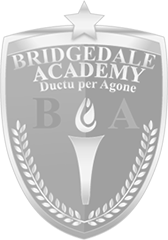The Physical Literacy of Youth Athletes Today
by Mike McPartlin, Headmaster, Bridgedale Academy
(This is the fourth of a 4-part blog series about developing physical literacy in young athletes.)
A young athlete’s physical literacy, developed between birth and the onset of puberty, is the foundation upon which his or her athleticism is built. It is defined as “the development of fundamental movement skills and fundamental sport skills that permit a child to move confidently and with control.” (See Developing Physical Literacy - Part 1.)
 The Long Term Athlete Development model (LTAD) is a science-based approach to athlete training that defines 7 physiological-age based stages of training, the first 3 of which are for the development of physical literacy. Although LTAD has been around in one form or another for more than thirty years, programs that effectively adhere to it are very limited. (See Developing Physical Literacy - Part 2.)
The Long Term Athlete Development model (LTAD) is a science-based approach to athlete training that defines 7 physiological-age based stages of training, the first 3 of which are for the development of physical literacy. Although LTAD has been around in one form or another for more than thirty years, programs that effectively adhere to it are very limited. (See Developing Physical Literacy - Part 2.)
The phenomenon of “early developers” and “late bloomers” has also been known for many years, but only recently has the concept known as “relative age effect” (RAE) received much attention. The potential impact of RAE on developing athletes (and on youngsters generally) is profound and far-reaching. (See Developing Physical Literacy - Part 3.)
This article, Part 4 of the Developing Physical Literacy series, discusses the physical literacy of today’s youth athletes. It first examines the development of physical literacy in youth hockey players, including the risks of early specialization, and then offers some general thoughts for parents and coaches of youth athletes.
Physical Literacy and USA Hockey's ADM programs
 USA Hockey, the National Governing Body for ice hockey in the United States (USAH), has been making a concerted effort to implement the Long Term Athlete Development model through its American Development Model (ADM) programs.
USA Hockey, the National Governing Body for ice hockey in the United States (USAH), has been making a concerted effort to implement the Long Term Athlete Development model through its American Development Model (ADM) programs.
Because ADM is based on the LTAD model, the development of physical literacy is one of its key components. Click here for an excellent article talking about how physical literacy fits into the ADM program.
I recently spoke with Bob Mancini, who serves as USAH’s ADM Regional Director for Michigan, Illinois and Missouri.
According to Mancini, more than 90% percentage of USAH organizations across the country are implementing at least some part of the ADM program within their clubs (for example, the cross-ice games component of ADM).
Yet only a handful of clubs and organizations nationwide have fully embraced ADM.
The irony, according to Mancini, is that every organization that is fully implementing the ADM program has experienced great success with their player development and with the retention of young athletes.
Specializing at hockey too young
One of the biggest challenges facing youth hockey players today is that too many youngsters are “specializing” in hockey at too young an age. The result is that, while they may be developing sufficient skills to be successful at the younger levels, they are not developing into well-rounded athletes, an absolute necessity if they hope to compete at the highest levels.
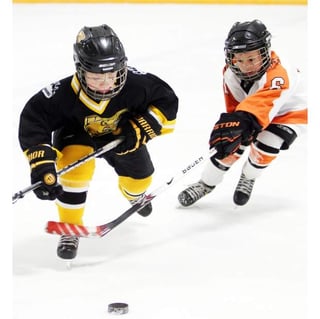 According to Utah’s “Sport for Life” initiative:
According to Utah’s “Sport for Life” initiative:
“All too often, early over-specialization in a single sport leads to a failure to become physically literate, poorer ultimate performance (than would otherwise be the case), injury, burnout and early retirement from sport. Physical literacy is, therefore, the key both to developing habits of lifelong physical activity for enjoyment and health, and to the development of world-class athletes.”
It is very easy to over-specialize at youth hockey
The tendency toward over-specialization in youth hockey is actually understandable.
For one thing, playing for a youth hockey club requires a huge commitment of time, energy and resources from the families who participate, often leaving no time for other sports or activities.
Combine this with the reality of how “exhilarating” hockey can be for youngsters (and their parents) in comparison to most other youth sports, and you end up with plenty of youngsters who want to play only hockey.
People jest that hockey is “addicting,” and that once kids get a taste of it, they usually become hooked. It’s a joke but like all good jokes, there’s some truth in it.
 Over-specializing happens in other sports too
Over-specializing happens in other sports too
Youngsters who play football, basketball and baseball are often likely to participate in at least two of these sports, and often all three. The predictable result is that these two- or three-sport athletes tend to be more well-rounded athletes.
But even in these sports today, there is often a “rush” toward specialization that ends up hurting the development of a young athlete’s physical literacy.
An excellent article discussing this, check out "Early Sport Specialization is Making Youth Less Athletic" by Dr. Greg Schailbe.
The old-fashioned way to develop physical literacy
Back in the day (i.e. before organized sports became so prevalent), youngsters would develop their physical literacy by being constantly “at play” in multiple activities and sports. Kids were far more likely to be outside playing than they are today.
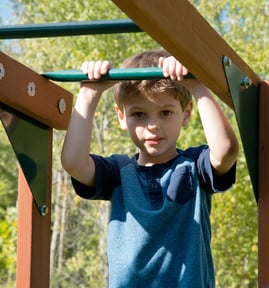 For any number of reasons today, however, playing outside and being super active playing multiple sports has become less and less an option for youngsters.
For any number of reasons today, however, playing outside and being super active playing multiple sports has become less and less an option for youngsters.
And so, unfortunately, it is more and more likely that youngsters are NOT maximizing their physical literacy, i.e. that they are NOT fully developing the foundation of their future athleticism.
What can be done today to maximize a youth athlete's physical literacy?
Since it is clear that many aspiring young athletes today are simply NOT developing their physical literacy to its fullest, the obvious question is: what can be done about it?
Here are three things that would make a difference:
- Parents and coaches being aware of LTAD and its basic tenets
- Schools getting back to emphasizing basic athleticism
- Organized sports emphasizing development over winning
Let’s look at each of these independently.
- Parents and coaches being aware of LTAD and its basic tenets
 Getting a strong head-start on the development of a youngster’s physical literacy requires that the parents and coaches understand what physical literacy is and that they have the child doing certain types of activities to develop it from the youngest ages, during the “Active Start” stage of the LTAD model.
Getting a strong head-start on the development of a youngster’s physical literacy requires that the parents and coaches understand what physical literacy is and that they have the child doing certain types of activities to develop it from the youngest ages, during the “Active Start” stage of the LTAD model.
Unfortunately, too many parents and coaches either are not aware of the importance of developing physical literacy, or it gets sacrificed on the altar of “winning now.”
For an excellent overview of what’s involved, check out Ian Stafford's book, Coaching for Long Term Athlete Development.
- Schools getting back to emphasizing basic athleticism
Years ago (long before the development of sports science and the LTAD), youngsters nonetheless tended to learn many of the foundational athletic movements so critical to physical literacy.
This is because years ago virtually all schools allowed or provided for their students to have tons of daily physical activity. The predictable result was that children would do what children naturally do: they would run, jump, throw and climb, etc.
This is not the case with most schools today. As explained on ADM’s website, “only 3.8% of American elementary schools, 7.9% of middle schools and 2.1% of high schools provide daily physical education.”
- Organized sports emphasizing development over winning
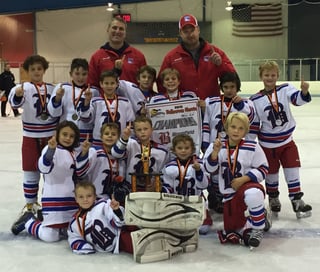 With schools having dropped the ball, organized sports clubs have tried to step into the void. And while these clubs generally do a good job helping youngsters to develop in a given sport, yet there are drawbacks and deficiencies in how most of these clubs approach the development of physical literacy (i.e. if they approach it at all).
With schools having dropped the ball, organized sports clubs have tried to step into the void. And while these clubs generally do a good job helping youngsters to develop in a given sport, yet there are drawbacks and deficiencies in how most of these clubs approach the development of physical literacy (i.e. if they approach it at all).
First, most of these clubs are by definition for one particular sport (e.g. the ABC Hockey club, or the XYZ Soccer club), and many of these are for what sports scientists call “late specialization” sports.
Yet at the younger ages, physical literacy is best developed by playing multiple sports.
Second, because these clubs are (again by definition) about “competitive” sports, there is a premium put on winning. And far too often, unfortunately, this comes at the expense of development.
Third, and related to the focus on winning, far too many late bloomers get left behind. Elite youth teams tend to favor “older” and more developed youngsters, and late bloomers get cut, missing out on the ongoing opportunities to develop presented by these elite teams.
Conclusion
The trend toward over-specialization in youth sports today appears to be having the unintended consequence of impairing the development of physical literacy in young athletes. This is especially true in so-called “late specialization” sports, including hockey.
In the hyper-competitive environment of most youth sports today, this trend toward over-specialization is understandable, even if undesirable.
The best way to counter the negative effects of over-specializing in a sport at too young an age is for parents and coaches to: a) understand what physical literacy is; and b) take the proper steps to ensure its full development in their young athletes.
For more in-depth treatments of these topics, check out the following books and articles:
Coaching for Long Term Athlete Development, Ian Stafford (2005)
Sports Specialization - Part I (2015)
Sports Specialization - Part II (2015)
Physical Literacy Concept Paper (2007)

You can read Bridgedale's other articles about Developing Physical Literacy at:
Developing Physical Literacy - Part 1
To learn more about Bridgedale, please click the button below to schedule a time to chat with Bridgedale's Headmaster.
At Bridgedale we are committed to the development of our young student-athletes, helping them to develop their physical and mental skills so they can perform at their best when it matters most, no matter the arena of life that challenges them. If you would like to learn more about Bridgedale Academy, please click the button below so we can schedule a time to chat.
Mike McPartlin, Headmaster, Bridgedale Academy
Attention 4th Graders
In addition to our 5th through 8th graders, Bridgedale Academy is accepting a limited number of 4th graders for the 2023-24 school year, on a case-by-case basis. Please call me at 708-712-5079 to inquire.
Mike McPartlin, Headmaster
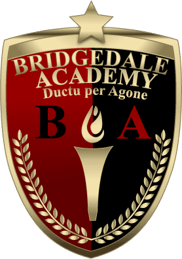
Bridgedale students LOVE going to school,
and so they THRIVE in it.
They LOVE coming to school every day.
And as a result, they are thriving.
They engage academically ...
... and so they come to love learning.
They also love that they get to work on the sport they have such passion for, while also training to become better athletes, all as part of their school day.
They train athletically ...
... and so they more fully develop their skills.
They LOVE getting so much better ... so much sooner.
They are physically fit and mentally alert ... they are thriving.
“Every shot you don't take won't go in.”
Wayne Gretzky
Bridgedale is now enrolling students for the 2023-24 School Year.






